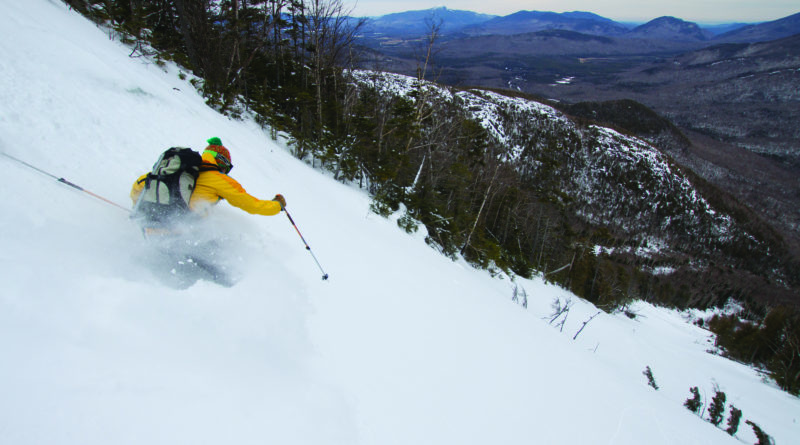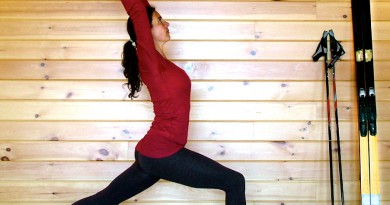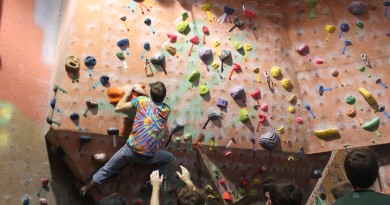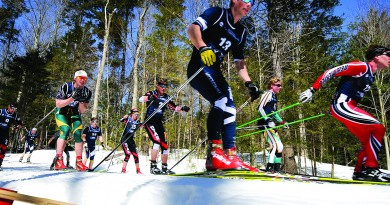The Mountains Aren’t Risky: Humans Are.
When my good buddy and longtime ski partner, Ian Forgays, was swept to his death by an avalanche on Mt. Washington last winter, I was thousands of miles away with my family. I could only imagine what happened, based on my knowledge of Ian as a skier, how he tended to navigate the mountains, and his uniquely personal tolerance for risk.
To this day I have these unusually clear visions of how it all went down. I don’t think he suffered much, if at all, and given the elation he conveyed in a short note and photo he texted to me that afternoon – “Amazing day out here… Miss ya guys!” —I know in my heart that Ian went out on a high note.
Ian spent countless days over the last four decades moving about our northeastern mountains on skis, with relatively few mishaps. Some describe Ian’s avalanche-related death as a freak accident, that getting caught up in an avalanche is one of the inherent risks of traveling through steep mountain environments during winter, and that what he experienced could happen to anyone.
Personally, I look at what happened very differently. I believe Ian was well aware of the risks to which he was exposed, and he accepted them, as he always did. Ian had a penchant for speed and adrenaline and had endured his fair share of close calls over the years. He was also incredibly skilled. This time, sadly (we miss him dearly), he made a bad call. But it was no accident.
Ian was skiing alone that day, as he often did, and as many of us choose to, as well, happily. There’s tremendous joy, freedom and clarity experienced when skiing solo, be it through remote backcountry terrain, but even along the fringes of ski areas or the larger gladed areas within them. It’s also easy to assume that there’s an inherently greater risk to skiing alone, and that Ian’s day could have ended very differently had he been with a partner. Perhaps that is true. Then again, things could have gone doubly wrong, too.
Clearly, risk is relative – utterly dependent on a skier’s experience, knowledge and skills. There were plenty of ways for Ian to ski in the mountains that day with a very minimal risk of injury, and zero avalanche risk. He had the skills and knowledge to move in this way. Yet, Ian opted for a greater level of risk. It’s what made him feel alive, energized, and motivated.
In many ways, navigating mountains on skis is not much different than navigating daily life. We all weigh risks, and our choices have tremendous consequences. What kind of food should we eat? Do we drive in the rain and snow tonight? Should we put more sunscreen on our face? We should probably get to bed, yes? Our choices have a direct impact on our future, be it hours, or years ahead, in time. When someone dies from heart disease, or gets banged up in a car accident, it’s easy to say it could happen to anyone. But could it? Our choices often have a profound impact on our futures.
Ultimately, skiing is a never-ending game of personal risk management. How we approach every turn, every line through the trees, and every gravity-fueled moment, has consequences. We consider our bodies, our jobs, our friends and families, the ski area staff and the ski patrollers. When we are in the backcountry, we consider how our choices could impact wildlife, the privacy and experience of others sharing the mountains…and limited search and rescue resources. Of course, most of us do our best to stay safe.
Yet, we are also human. We push ourselves. To know our limits, we’ve got to test them. We grow the sport, and ourselves as individuals, by exploring new techniques and by trying new things. And we make mistakes – occasionally big ones – but with some wiggle room, we ski away, unscathed. However, when there’s no room for error, things can quickly unravel.
This past February’s avalanche incident in New York’s Adirondack Mountains drives home the importance of leaving some room for error. While two skiers were ascending one of the Angle Slides on Wright Peak, they remotely triggered a sizeable avalanche that proceeded to run more than 500 feet and bury them both.
[See related: New Avalanche Forecasts for the Northeast]
The stability of the snowpack was questionable, and a recent spike in temperatures was a red flag, but neither factor kept these skiers out of harm’s way. Luckily, one skier was able to free himself rather quickly. He then scrambled to locate his friend (they were both wearing avalanche transceivers), who had been buried under several feet of snow for more than ten minutes. He was unconscious and barely breathing. Yet, miraculously, while his friend continued to dig him free, he awoke. Fortunately, both skiers were relatively unscathed, and they proceeded to head for home on their own, safely.
While the skiers’ ability to self-rescue played a role in keeping them alive, several factors could have easily led to a very different, and potentially tragic, outcome. Was the avalanche a sign that they should not have been in the mountains that day? No, but it was an indication that some areas were especially dangerous, and that backcountry travel requires extra caution.
Still, there is always a safe way to move about the mountains, no matter the snow conditions, weather or terrain. It requires traveling honestly within the limits of your knowledge and experience, while making safe choices, repeatedly, throughout the day. If it were only as easy as it sounds…
As the days warm and at least some of us are lured to the steeper alpine regions of our northeastern states and beyond, let’s play it safer than ever this spring. Let’s listen to our instincts, travel more carefully and cautiously than ever, and leave ourselves some extra room for error. There’s no doubt that we can still have just as much fun. And this way, tomorrow, we can get out there and do it again.
Brian Mohr of Moretwon, VT, has been successfully managing risks in the mountains since he first descended the slopes of Vermont’s Killington Peak, in his mother’s womb. He co-owns Ember Photography with his wife, Emily Johnson. They have led and self-guided countless backcountry skiing adventures, safely, through remote regions of the Arctic, the Andes, Alaska, the Alps, and many more.




